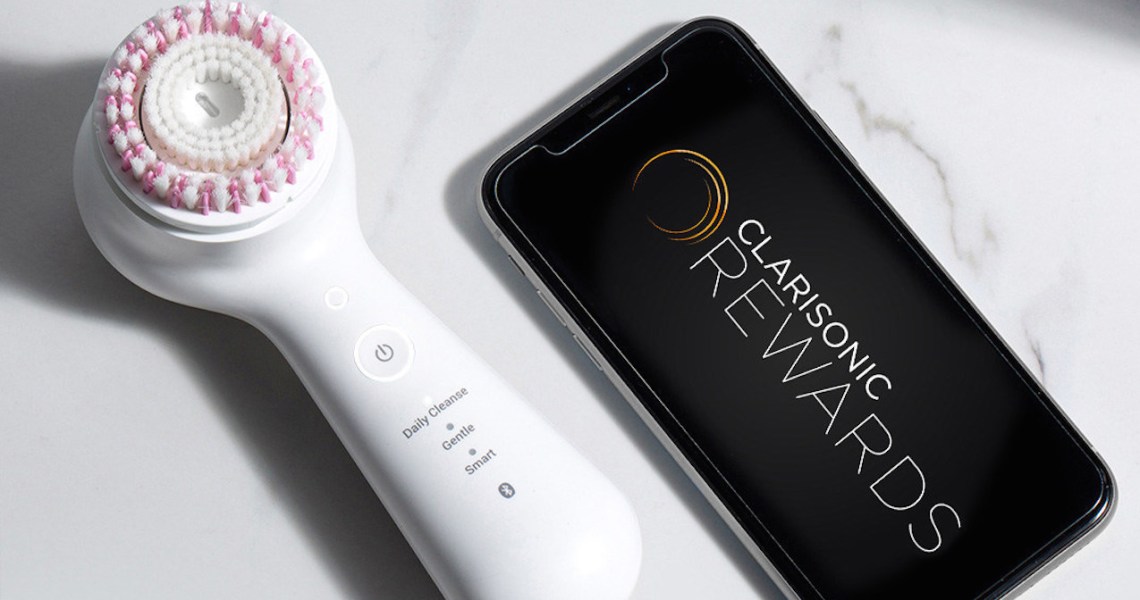Despite the rapid growth of the facial device market, brands are still struggling with getting their customers to use devices consistently. L’Oréal-owned Clarisonic is aiming for a solution with its new rewards program.
The rewards program, which launched on July 11, features two tiers: a free entry-level option called Premier and another called Elite for those who spend more than $350 in a calendar year on Clarisonic.com and other authorized retail partners like Sephora. Members at both levels receive early access to new products and sales, as well as an annual birthday gift of $10 off a purchase. Elite members additionally receive a welcome gift, product samples and sales offers from other L’Oréal brands and invitations to trial new Clarisonic products. Clarisonic is promoting sign-up through its website, as well as through its app and social channels like Facebook and Instagram. Other leading facial device brands, like Foreo, which is worth $1 billion, NuFace and ZIIP, do not offer loyalty programs.
Clarisonic is the only standalone facial device brand that was acquired by a major beauty conglomerate. Its recent trajectory somewhat serves as a cautionary tale for the larger beauty device landscape. In 2016, L’Oréal took an approximately $263 million impairment on Clarisonic and laid off 120 members of its team, indicating that sales had not met expectations. It was a quick downfall after surpassing $100 million in sales in 2010 before being acquired in 2011. Beauty brands within other conglomerates, such as Olay (which is Procter & Gamble-owned) and Estée Lauder Companies’ Clinique, launched their own facial devices in 2010 and 2014, respectively, creating an increasingly competitive environment. Those devices retail at about 60% less than Clarisonic’s, which start at $99.
“With this rewards program, we want to recognize our consumers. What we missed the boat on was understanding the power of the consumers that frantically bought [our devices] back in 2007,” said Kathy Chi-Thurber, Clarisonic’s general manager. “Clarisonic has sustained growth for 10 years, even with running into trouble. For the last five years, the challenge has been developing the right level of innovations; that has been the No. 1 reason we have not met expectations.”
The use of a rewards program as a course correction tool for Clarisonic also comes at a pivotal time for the facial device industry. Between 2012 and 2017, sales in the U.S. facial device market grew 36% to $1.6 billion, according to Mintel, and approximately 35% of households reported having a skin-care device in 2017. New facial device products continue at a break-neck pace: In July, Dermaflash debuted a pore extractor tool, and Neutrogena is launching its MaskID in September 2019.
One problematic area within the device market, though, has been ensuring frequent and sustained usage. Clarisonic’s rewards program is designed to mitigate these issues. Other brands have tried to tackle the issue, as well, although measuring success is still uncertain. Dermaflash relaunched its device in September 2018 so that used blades could not be reinserted, in an effort to compel users to repurchase, and Foreo debuted its Luna Fofo incorporating an AI-fueled beauty coach encouraging prolonged usage.
The underlying goal for Clarisonic is not only to increase replenishment sales but also to build a better understanding of customer needs for future product. Through the brand’s brush heads, it can only earn between $88 and $108 a year per customer in retail sales, if they routinely replace their brush head every three months as recommended. Since December 2017, Clarisonic has been conducting “Passion Panels” with various age groups to better understand what customers consider the look of perfect skin, said Madelyn Cline, Clarisonic’s influencer marketing coordinator. In addition to rewarding behavior, Clarisonic will also offer to its higher-tier members a concierge service to create personalized beauty regimens centered around their device. Customers with the app-connected Mia Smart device can also earn more perks, such as points.
Ad position: web_incontent_pos1
“We want to understand what consumers find valuable, and we want to build algorithms around natural behavior and how to reward that natural behavior,” Chi-Thurber said. “What I’d would love is for this to be more programmatic and predictable, where we build a routine with customers.”




